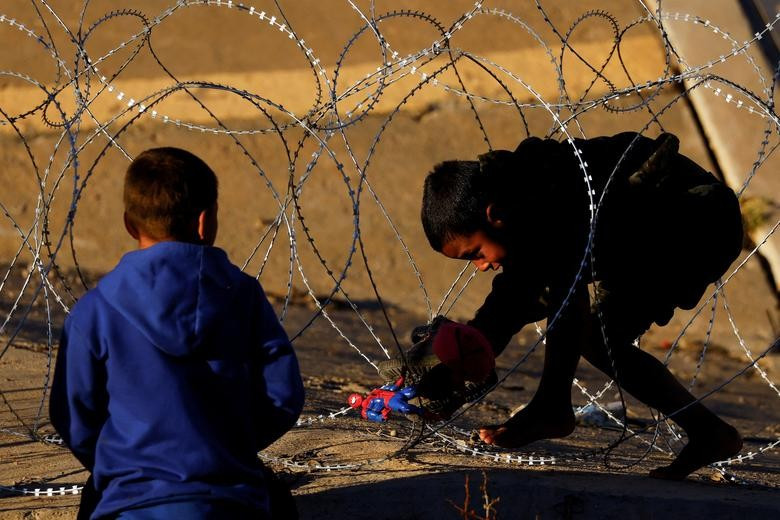In a statement at the White House, President Biden said the US will expand the restrictions on immigration, which have been imposed since the previous administration. Specifically, the US will quickly deport migrants from Nicaragua and Haiti, who were detained for illegally crossing the US-Mexico border.
However, the US also applied a humanitarian policy, as the country received about 30,000 migrants from Nicaragua, Haiti and some other countries, via air each month. These policies alone cannot "fix" the entire immigration system but can help address some of the current controversial issues, the American leader said.
The above two-pronged approach to the problem of migration was said to resolve conflicts and disagreements related to this conundrum. On the one hand, President Biden wanted to end criticism from Republicans, when the number of migrants crossing the US-Mexico border increased to a record high and put pressure on the US security and welfare system.
On the other hand, the head of the White House appeased Democrats and those who argued that the restrictive measures imposed by the previous administration, prevented migrants from exercising their right to seek asylum.
The Mexican government welcomed Washington's new move, saying that the US had "responded positively" to Mexico's requests on expanding employment opportunities and have a humane approach to migrants in the region. If the admission cap is 30,000 migrants per month, a total of 360,000 people will be allowed into the US in 2023. This is the largest increase in job opportunities in the US, for migrants in recent years.
For a long time, the permanent image in Mexico has been the sight of caravans of hundreds of people, including many children, walking from the south to the northern border with the US, despite inclement weather and food shortages. According to the US Government data, US border forces detected 82,000 migrants from countries such as Nicaragua and Haiti, who were trying to enter the US without permission at the border area of Mexico, in November 2022.
The massive influx of migrants to the US has put great pressure on the administration of President Joe Biden, especially as he is about to launch his re-election campaign. Recently, Texas Governor Greg Abbott sent a letter to President Biden, which stressed that the US border policies could lead to a large wave of migrants flocking to border states, causing overcrowding for the system of receiving and thus exposing migrants to the risk of freezing to death, when they struggle on the streets during the harsh winter.
Migration is a priority topic of discussion at the ongoing NALS in Mexico, under the presence of the Presidents of the US and Mexico and the Prime Minister of Canada. Just before arriving in Mexico for the summit, President Biden visited El Paso, Texas, marking his first trip to the southern border since he took office. El Paso City declared a state of emergency in December 2022, amid an alarming increase in the flow of migrants.
The US Department of Homeland Security said that the issue of migration is a common challenge for the continent and requires a solution for the entire region. Reality has proven that a sustainable solution to the migration crisis cannot come from solid concrete walls, but must come from comprehensive and synchronous policies, that deal with the root cause of the problem and effectively respect and protect the basic rights of migrants.
















